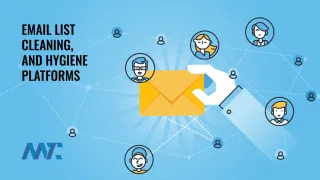We’ve been working with a national non-profit on a complex Salesforce and Marketing Cloud migration and implementation. Early on in our discovery, we pointed out some key issues regarding their preferences, which were very operations-based.
When the company designs a campaign, it creates a list of recipients outside its email marketing platform, uploads it as a new list, designs the email, and sends it to that list. The problem with this was that it set in motion a few issues:
- The unsubscribe page contained a myriad of unfriendly publication names that a subscriber couldn’t understand.
- If the recipient clicked unsubscribe in the email, it only unsubscribed them from the newly uploaded list, not from the type of communication from which the subscriber thought they were unsubscribing. If they continue to receive other emails of that type, that’s a frustrating experience for your subscribers.
- With so many lists on the unsubscribe page, recipients would opt into a master unsubscribe instead of the type of communication. So, you’re losing subscribers that may have stuck around if you didn’t frustrate them with preferences designed for your operations rather than their motivation and interests.
Organizing Your Email Service Provider
While advanced CRM and email service providers (ESPs) offer the opportunity to build and design custom preference centers with amazing experiences… smaller services will use lists to organize your subscriber’s preference page or unsubscribe page.
If you can’t design your preference page, create your lists from the subscriber’s viewpoint using the type of communication you’re sending. Lists could be offers, advocacy, news, tips and tricks, how-tos, alerts, support, etc. This way, if subscribers don’t want to get more offers, they can still subscribe to other areas of interest while unsubscribing themselves specifically from the offers list.
In other words, use the features of the email platform appropriately:
- Lists: These are topical and offer the subscriber to unsubscribe from specific types of communications. Example: Offers
- Segments: These are filtered subsegments of lists you want to use for improved targeting. Example: Top 100 Customers
- Campaigns: These are actual messages sent to one or more segments and/or lists. Example: Thanksgiving Offer to Top Customers
In other words, if I wished to send an offer to people who had spent more than $100 on my e-commerce platform this year, I would:
- Add a data field, 2020_Spent, to my Offers List.
- Import the money spent by each subscriber to your email platform.
- Create a segment, Spent over 100 in 2020.
- Create my messaging for the offer into a campaign.
- Send my campaign to the specific segment.
If the contact wishes to unsubscribe, they will be unsubscribed from the Offers List… precisely the functionality we want to have.
Building A Role-Based Preference Center
If you can design and build your own integrated preference center that offers an optimal experience:
- Identify your subscribers’ roles and motivations and then build those flags or selections into your customer relationship management platform. These should align with personas within your organization.
- Design a preference page that is personalized to your subscriber with the benefits and expectations that opting into that topic or area of interest will provide. Integrate your preference page with your CRM so that you have a 360-degree view of your customer’s interests.
- Ask your subscriber how often they wish to be communicated to. You can use daily, weekly, bi-weekly, and quarterly frequency options to improve your list retention and avoid subscribers getting upset that they’re receiving too many messages.
- Integrate your marketing platform so that those topics are designed into specific lists that you can segment and send campaigns to. This will improve your contact management and align the metrics with the subscriber’s motivation.
- Ensure you have the data elements integrated with your CRM and synchronized to your marketing platform to create, personalize, and send to targeted segments within your list.
- Offer a master unsubscribe at the account level as well in the event that a subscriber wishes to opt-out of all marketing-related communications.
- Add a statement that the recipient still will be sent transactional communications (purchase confirmation, shipping confirmation, etc.).
- Incorporate your privacy policy along with any data usage information on your preference page.
- Incorporate additional channels of communication, like community forums, SMS alerts, and social media pages to follow.
But Wait, There’s More
If your subscriber is looking to master unsubscribe, this is your last chance to speak to them. Here are some additional ideas:
- Offer Alternatives: Offer other means of staying in touch, like following on social media or subscribing via SMS.
- Request Feedback: Provide a list of reasons people typically unsubscribe and add an open-ended form entry if the subscriber wishes to provide additional feedback.
- Make an Offer: Provide evidence that you care about your relationship with the subscriber and provide them a discount or freebie for being a part of your community.
By planning and utilizing lists, segments, and campaigns appropriately, you’ll not only keep your email service provider user interface clean and organized, you can also dramatically improve the customer experience for your subscribers.
